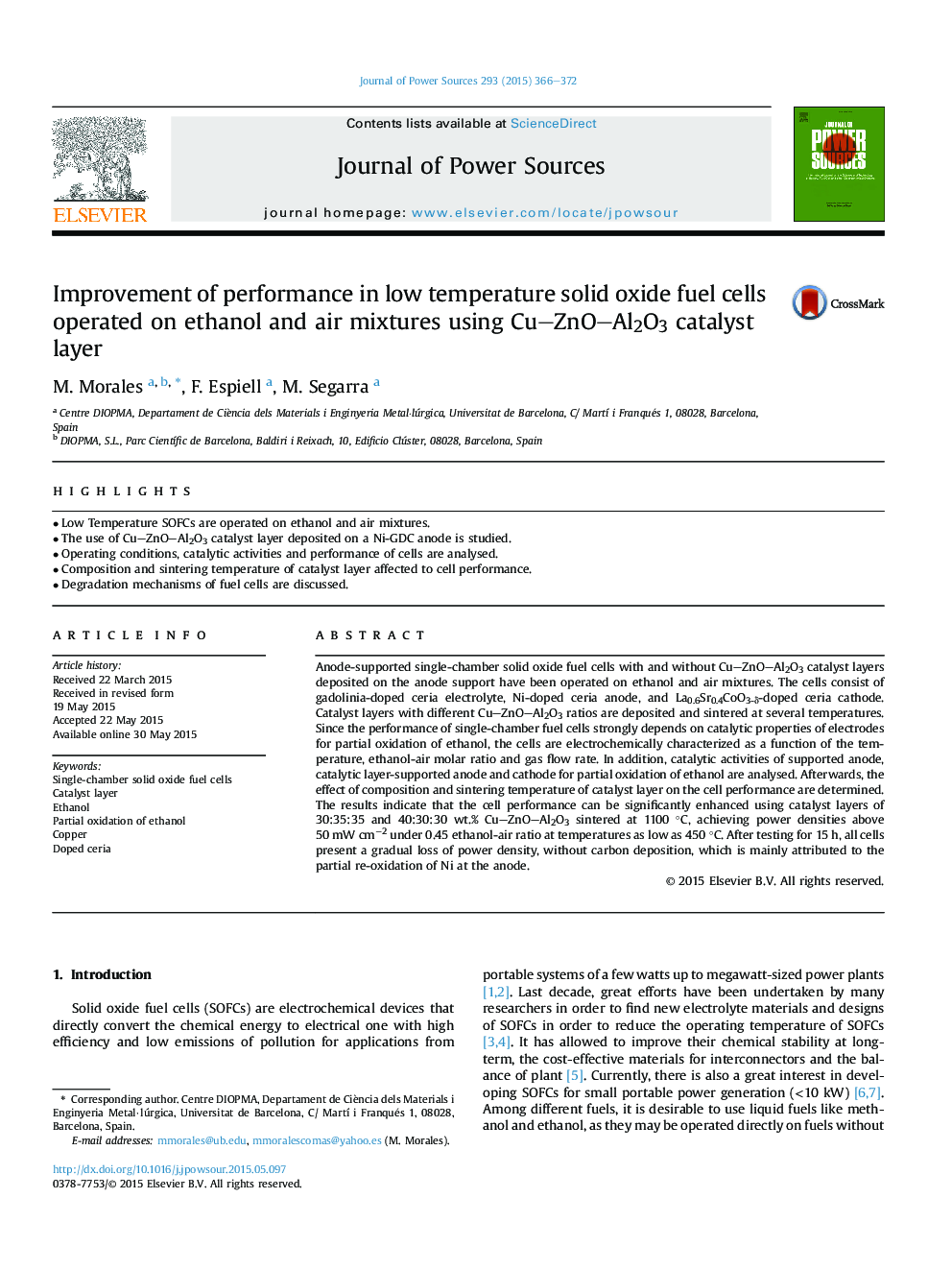| Article ID | Journal | Published Year | Pages | File Type |
|---|---|---|---|---|
| 7730920 | Journal of Power Sources | 2015 | 7 Pages |
Abstract
Anode-supported single-chamber solid oxide fuel cells with and without Cu-ZnO-Al2O3 catalyst layers deposited on the anode support have been operated on ethanol and air mixtures. The cells consist of gadolinia-doped ceria electrolyte, Ni-doped ceria anode, and La0.6Sr0.4CoO3-δ-doped ceria cathode. Catalyst layers with different Cu-ZnO-Al2O3 ratios are deposited and sintered at several temperatures. Since the performance of single-chamber fuel cells strongly depends on catalytic properties of electrodes for partial oxidation of ethanol, the cells are electrochemically characterized as a function of the temperature, ethanol-air molar ratio and gas flow rate. In addition, catalytic activities of supported anode, catalytic layer-supported anode and cathode for partial oxidation of ethanol are analysed. Afterwards, the effect of composition and sintering temperature of catalyst layer on the cell performance are determined. The results indicate that the cell performance can be significantly enhanced using catalyst layers of 30:35:35 and 40:30:30 wt.% Cu-ZnO-Al2O3 sintered at 1100 °C, achieving power densities above 50 mW cmâ2 under 0.45 ethanol-air ratio at temperatures as low as 450 °C. After testing for 15 h, all cells present a gradual loss of power density, without carbon deposition, which is mainly attributed to the partial re-oxidation of Ni at the anode.
Related Topics
Physical Sciences and Engineering
Chemistry
Electrochemistry
Authors
M. Morales, F. Espiell, M. Segarra,
